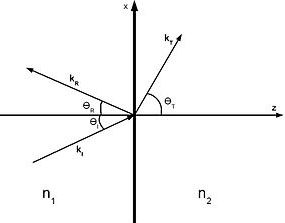Total internal reflection
Total internal reflection, in physics, complete reflection of a ray of lightwithin a medium such as water or glass from the surrounding surfaces back into the medium. The phenomenon occurs if the angle of incidence is greater than a certain limiting angle, called the critical angle. In general, total internal reflection takes place at the boundary between two transparent media when a ray of light in a medium of higher index of refraction approaches the other medium at an angle of incidence greater than the critical angle. For a water-air surface the critical angle is 48.5°. Because indices of refraction depend on wavelength, the critical angle (and hence the angle of total internal reflection) will vary slightly with wavelength and, therefore, with colour. At all angles less than the critical angle, both refraction and reflection occur in varying proportions.
Total internal reflection of light can be demonstrated using a semi-circular block of glass or plastic. A "ray box" shines a narrow beam of light (a "ray") onto the glass medium. The semi-circular shape ensures that a ray pointing towards the centre of the flat face will hit the curved surface at a right angle; this will prevent refraction at the air/glass boundary of the curved surface. At the glass/air boundary of the flat surface, what happens will depend on the angle. Where θc is the critical angle measurement which is caused by the sun or a light source(measured normal to the surface):

If θ < θc, the ray will split. Some of the ray will reflect off the boundary, and some will refract as it passes through. This is not total internal reflection.
If θ > θc, the entire ray reflects from the boundary. None passes through. This is called total internal reflection.

